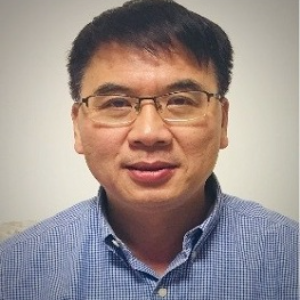Title : Cux Ce1-xO2 nanoflake type catalysts with improved catalytic activity and good thermal stability for diesel soot combustion
Abstract:
In the present study, nanoflakes (NF) of CeO2 -NF and Cux Ce1-xO2 -NF (x = 0.1, 0.2, 0.3 and 0.4) were prepared with the polyvinylpyrrolidone(PVP)-assisted co-precipitation method. The prepared samples were first characterized with FE-SEM, HR-TEM, XRD, N2 adsorption, O2 -TPD, H2 -TPR, Raman and XPS. Then, their catalytic performance and thermal stability were examined for the applications in soot combustion. It was found that Cux Ce1-xO2 -NF exhibited much better activity in tight contact mode than CeO2 -NF that has no Cu doping. Furthermore, the highest activity was observed for the sample of Cu0.2Ce0.8O2 -NF, which was most likely due to its moderate doping that induced both a large amount of surface adsorbed oxygen species and a special flake morphology, thus providing effective contact area. However, in NOx -assisted loose contact mode, the catalysts exhibited relatively lower activity with a T50higher than that of tight contact mode due to the reduced solid-solid contact points. Finally, both the cyclic and accelerated aging tests demonstrated that Cu0.2Ce0.8O2 -NF was able to keep a good thermal stability.
Audience Take Away:
- Nanoflakes of CeO2 -NF and Cu0.2Ce0.8O2 -NF were synthesized with the PVP-assisted co-precipitation method.
- Doping of Cu in CeO2 -NF significantly promoted the formation of oxygen species that replenished the vacancies.
- Cu0.2Ce0.8O2 -NF exhibited superior catalytic performance in soot oxidation with a T50 as low as 312 °C for tight contact mode and 360 °C for loose contact mode.
- Cu0.2Ce0.8O2 -NF kept good catalytic activity and thermal stability after five cycles or the accelerated aging tests.



